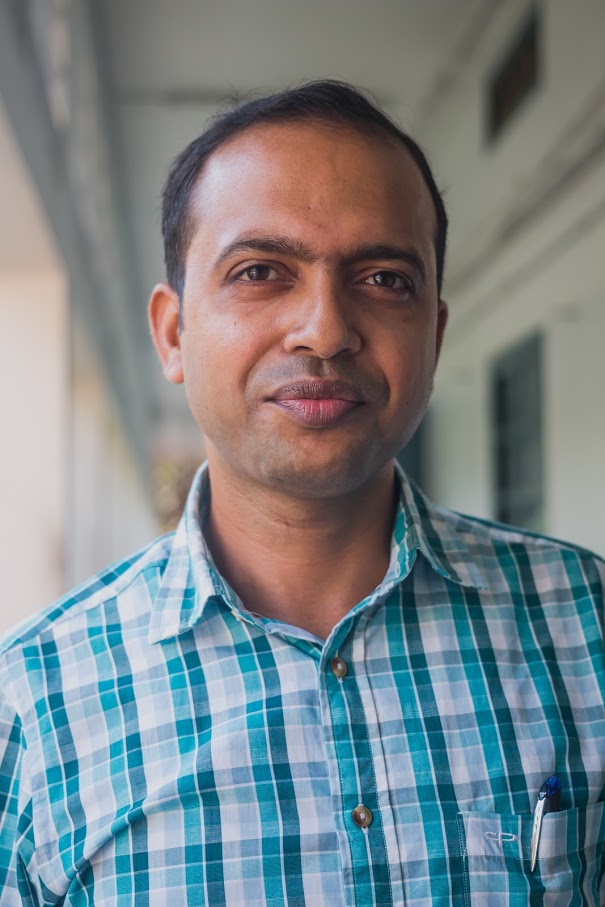
Once considered a noble profession, farming has lost its charm over the years. Strange as it may sound, these food producers are finding it difficult to earn their bread and butter through the farming profession due to weather vagaries which are lowering crop productivity. While in the past, most of the rural folks were engaged in farming, many villagers are now taking the route of cities to earn a living. Even those staying in villages are exploring other non-farming professions that can earn them an income enough to suffice monthly expenses. While diversification of the rural professions may seem like a good means for any household to earn a stable and steady income, many are still not walking in this direction.
Dr Sabuj Kumar Mandal, Associate Professor at the Department of Humanities and Social Sciences at IIT Madras, has been passionate about studying the rural economy. He wondered what are the major bottlenecks which prevent the farmers from taking up some other non-farming jobs in villages even when the farming profession is not providing them enough to meet their needs. If the hindrances are known, he believes, it can help policymakers decide on strategies that can help in diversification of farmers to non-farming jobs ensuring the income stability of their households.

Dr Sabuj Kumar Mandal 
Anviksha Drall
With the above intention, Dr Mandal and her student Anviksha Drall decided to study this issue in greater detail. Recently, they have published the results of their study in a reputed international journal World Development highlighting the major issues due to which the farming remains major profession in villages though it is not lucrative.
“Rural farm households look for RNFS employment as a coping mechanism to various climatic and non-climatic risks they face in agricultural activities. Entry into the non-farm sector, however, may be restricted for many of these households due to their lower level of technical education, the lower endowment of social capital and less or no access to credit. These factors may act as entry barriers for them while entering into the non-farm sector. Therefore, it is necessary to conceptualize such entry barriers at the theoretical level and also to examine their empirical existence. Appropriate policies should be formulated to remove such barriers if exist,” says Dr Mandal, while explaining the need for the study.
To carry out this study, the team utilized the dataset from Village Dynamics in South Asia (VDSA) project which was undertaken by the International Crops Research Institute for the Semi-Arid Tropics (ICRISAT) in collaboration with Bill and Melinda Gates Foundation (BMGF). The dataset contained information on labour allocation decisions, farm inputs, farm output, access to credit and other socio-economic characteristics of the rural households. As Dr Mandal’s team was interested in the Indian rural scenario, they used this data available on eight Indian states-Andhra Pradesh, Bihar, Gujarat, Jharkhand, Karnataka, Madhya Pradesh, Maharashtra and Odisha for a span of five years from 2010 to 2014 for their study. They used a fractional response model to find out the factors that determine the diversification of rural people into non-farm sector jobs.
The study brought out many interesting insights and associations that guide a household’s decision to employ some of the family members in non-farm jobs. Lack of education and technical skills were found to be a major roadblock restricting the movement of farmers towards other professions. The study also found that if a household participates in cooperatives and other such organizations, they can easily navigate to other professions due to the entrepreneurship skills and awareness acquired through these networks. While farmers with large holdings were seldom interested to change their profession, the smallholder farmers tried diversification route to get extra income.
“This paper has contributed to the theoretical literature by incorporating entry barriers and coping mechanism to farm output risk theoretical models. The novel feature in the empirical analysis is that a fractional response model capable of accounting for the intensity of RNFS income is used to analyse panel data collected on income from rural non-farm activities. The research shows that inaccessibility to credit, social capital, lack of education, gender of the household head and household size are the major entry barriers which hinder the ability of households to diversify into rural non-farm activities to come out of poverty,” comments Dr. D. Rajasekhar who is Director In-Charge, HAG Professor & Head, Centre for Decentralisation and Development at the Bengaluru based Institute for Social and Economic Change and works in similar area.
The researchers also found that households headed by women or elderly and households with large family sizes were more akin to joining other professions than farming. Other than these, access to electricity and mobile phones was found to be a major factor in the diversification. This is because electricity is needed in many entrepreneurial projects whereas mobile provides access to information that can be used to build a new business or learn a new skill. The presence of extra cash showed adubious relationship with diversification. While the presence of some extra cash helped many households to start their businesses, however, if a farming household has surplus cash then they may not feel the need to diversify.
“In our present study, we have conceptualized standard economic factors that may act as entry barriers. However, farm households may suffer from many behavioural anomalies which prevent them from looking for better alternative means of livelihood. For example, households may suffer from status-quo bias or some kind of inertia that prevent them from going for non-farm employment even when farm activities are not so profitable. We would like to capture these types of behavioural factors in future by conducting primary surveys with the households,” adds Dr Mandal while discussing the plans of his research.
Article by Aditi Jain
Here is the original link to the scientific paper:
https://www.sciencedirect.com/science/article/abs/pii/S0305750X2030509X









